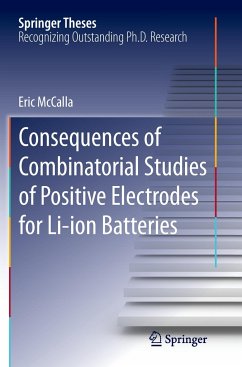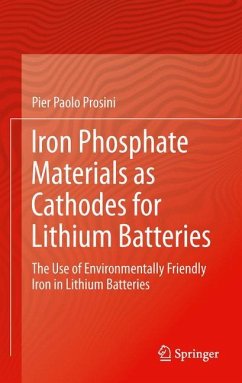
Consequences of Combinatorial Studies of Positive Electrodes for Li-ion Batteries
Versandkostenfrei!
Versandfertig in 6-10 Tagen
76,99 €
inkl. MwSt.
Weitere Ausgaben:

PAYBACK Punkte
38 °P sammeln!
Li-Co-Mn-Ni oxides have been of extreme interest as potential positive electrode materials for next generation Li-ion batteries. Though many promising materials have been discovered and studied extensively, much debate remains in the literature about the structures of these materials. There is no consensus as to whether the lithium-rich layered materials are single-phase or form a layered-layered composite on the few nanometer length-scales. Much of this debate came about because no phase diagrams existed to describe these systems under the synthesis conditions used to make electrode materials...
Li-Co-Mn-Ni oxides have been of extreme interest as potential positive electrode materials for next generation Li-ion batteries. Though many promising materials have been discovered and studied extensively, much debate remains in the literature about the structures of these materials. There is no consensus as to whether the lithium-rich layered materials are single-phase or form a layered-layered composite on the few nanometer length-scales. Much of this debate came about because no phase diagrams existed to describe these systems under the synthesis conditions used to make electrode materials. Detailed in this thesis are the complete Li-Co-Mn-O and Li-Mn-Ni-O phase diagrams generated by way of the combinatorial synthesis of mg-scale samples at over five hundred compositions characterized with X-ray diffraction. Selected bulk samples were used to confirm that the findings are relevant to synthesis conditions used commercially. The results help resolve a number of points of confusion and contradiction in the literature. Amongst other important findings, the compositions and synthesis conditions giving rise to layered-layered nano-composites are presented and electrochemical results are used to show how better electrode materials can be achieved by making samples in the single phase-layered regions.













